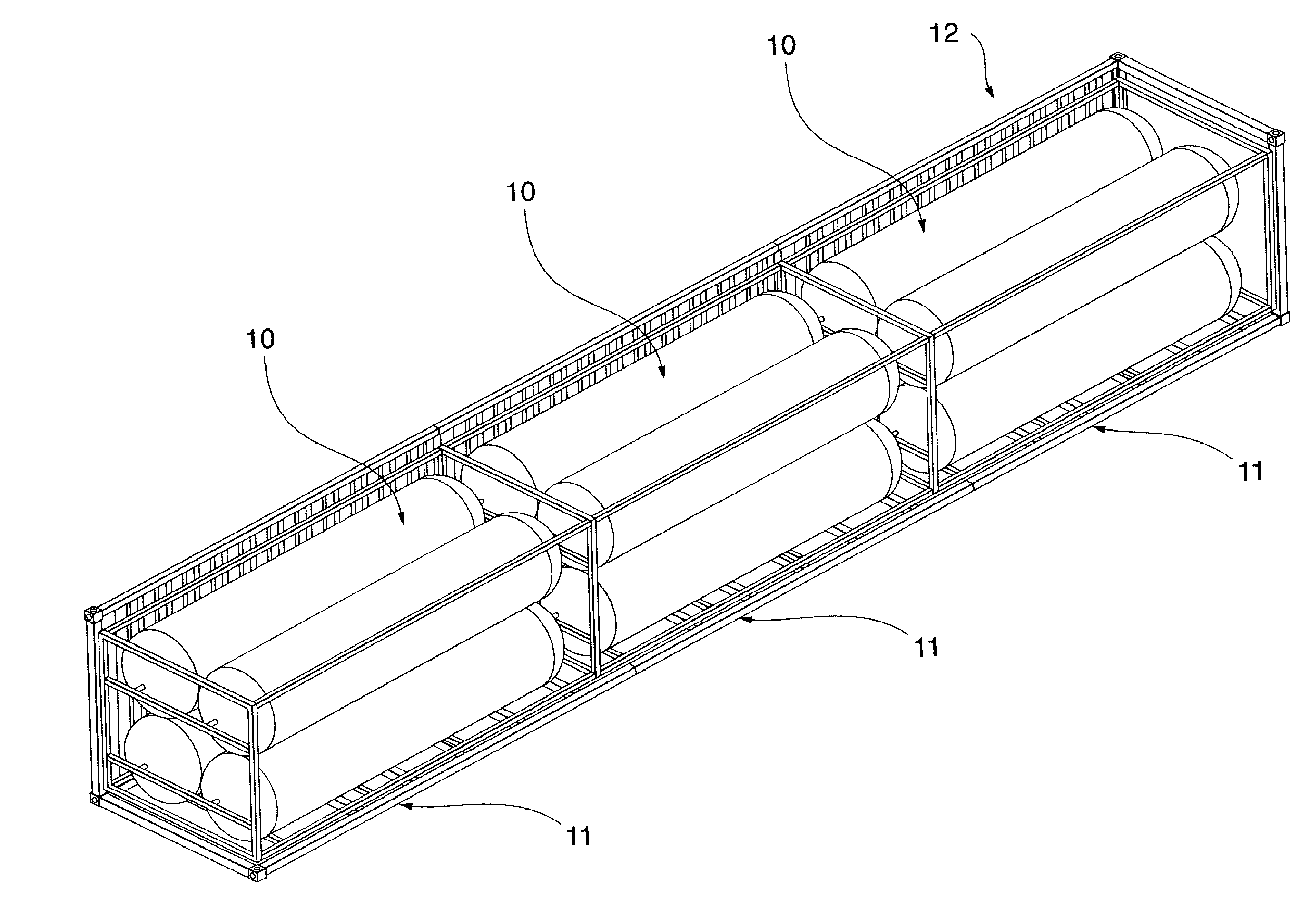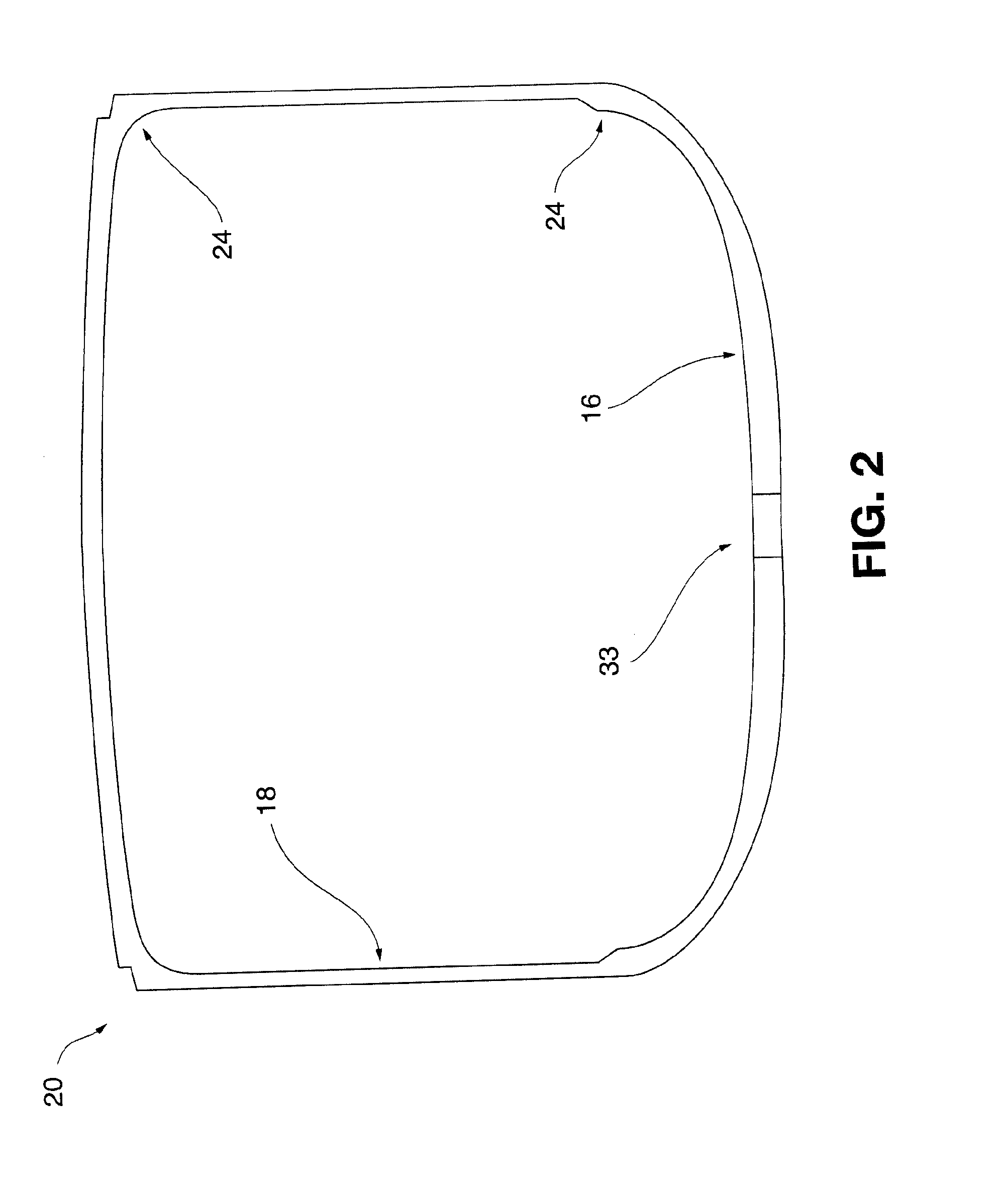Method of fabricating type 4 cylinders and arranging in transportation housings for transport of gaseous fluids
a technology of gaseous fluids and pressure vessels, which is applied in the direction of tank vehicles, transportation vehicles, items, etc., can solve the problems of high cost of pressure vessel systems, easy corrosion of steel systems, and easy damage of steel systems
- Summary
- Abstract
- Description
- Claims
- Application Information
AI Technical Summary
Benefits of technology
Problems solved by technology
Method used
Image
Examples
Embodiment Construction
[0011]According to one object of one embodiment of the invention, there is provided a lightweight intermodal container or road trailer system for storing and / or transporting refrigerated gaseous fluids, comprising:[0012]an enclosed and insulated transportation housing; and[0013]a plurality of low-temperature resistant type 4 pressure vessels of at least three feet in diameter secured within said transportation housing for containing said gaseous fluids.
[0014]According to another object of one embodiment of the invention, there is provided a method of providing a lightweight intermodal container or road trailer system for storing and / or transporting refrigerated gaseous fluids, comprising:
[0015]loading conventional liquefied natural gas (LNG) into insulated type 4 pressure vessels housed within a transportation housing for the transport of pressurized, liquefied natural gas.
[0016]According to a further object of the invention, there is provided A lightweight intermodal container, com...
PUM
| Property | Measurement | Unit |
|---|---|---|
| diameter | aaaaa | aaaaa |
| density | aaaaa | aaaaa |
| stress concentrations | aaaaa | aaaaa |
Abstract
Description
Claims
Application Information
 Login to View More
Login to View More - R&D
- Intellectual Property
- Life Sciences
- Materials
- Tech Scout
- Unparalleled Data Quality
- Higher Quality Content
- 60% Fewer Hallucinations
Browse by: Latest US Patents, China's latest patents, Technical Efficacy Thesaurus, Application Domain, Technology Topic, Popular Technical Reports.
© 2025 PatSnap. All rights reserved.Legal|Privacy policy|Modern Slavery Act Transparency Statement|Sitemap|About US| Contact US: help@patsnap.com



